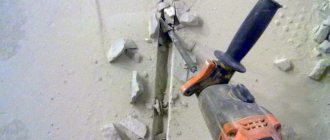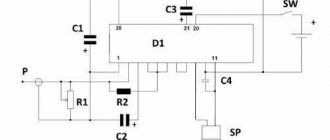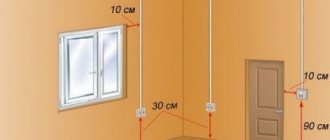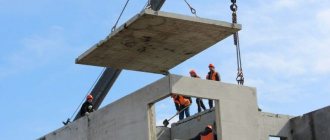How to make electricity in the house
It is quite possible to hire such a person by going to certain sites on the Internet. Now this profession is developing quite quickly. Many young people entering universities want to become electricians. And this is the right decision, since this profession is becoming more and more in demand every year.
Electrician recruitment agencies are also growing at an incredible rate. Their prices for services are reasonable, and the experience of their employees is enormous. Such a specialist will quickly cope with the task proposed to him. Another, no less important advantage in cooperation with such agencies is their guarantee for the work done by specialists. This warranty is most often about one year.
And what specialist would risk the quality of his work, knowing that in case of failure he would have to redo everything for free? Another advantage of calling an electrician through such an agency is a certificate for consumable materials during work. You won't have to worry about purchasing low-quality or unsuitable material. The electrician will buy everything you need and bring it to your home.
Replacing wiring in an apartment
It's no secret that in any house that was built during the USSR, aluminum electrical wiring was installed in the apartments, which was not designed to provide electricity to such energy-intensive electrical appliances. What the apartment wiring was designed for: refrigerator, TV, washing machine and several light bulbs.
Please note that Soviet refrigerators and washing machines (and those that not everyone had) consumed several times less electricity than modern ones. Now let’s just take offhand the standard set of modern home electrical equipment: a refrigerator, a washing machine, 2 TVs, a computer, an electric kettle, not to mention the fact that many have air conditioners, water heating tanks, heaters, etc.
You can imagine how much power these devices consume by looking at the electric meter, in particular at its intense rotation. As a result of such a load, the wiring cannot withstand and fails: it shorts out, melts and burns out. Moreover, in order to save money, electricians used aluminum wiring rather than copper, which is much worse in its properties. In this case, replacing the wiring is not only recommended, but mandatory.
It is especially necessary to replace the wiring in Khrushchev, where the wiring is of very poor quality. We will try to devote this publication to this issue and will tell you how to replace the wiring yourself.
How to make electricity in the house
How to install electricity in your home without worrying about your continued safety? First, make a plan for running electricity into your home. Decide which way you will route the electrical cable into your home. As a rule, there are not so many of these paths, only two.
- The first path is underground, also called trench.
- The second path is called air.
In this case, the cable is laid from the source of electricity to the house through the air, using special poles - supports, which are made of wood or reinforced concrete. Also determine the type of wiring that will be installed in your home - hidden or open. Depending on various circumstances, the electrician finds the most optimal option for installing electricity in your home and gives reasons for his decision.
Complete replacement of wiring in the old building
Hi all! Before starting the renovation, I set out to completely change the wiring in the apartment. The fact that now it is complete horror, still old aluminum wiring (of course there is no grounding), only two automatic plugs for 16A (per phase and zero) and an old inductive meter. I want to change it starting from the shield on the staircase. Now there really is God knows what, but I determined that a prehistoric plug is responsible for my apartment, seemingly with a nominal value of 20A (at least on the body there is such a value). Next, I want to install a panel in the apartment, a new digital meter for two tariffs. I ask experts on this forum to suggest what and how best to do, I will be very grateful for your advice and help!
QUESTION #1. What denomination should I install the input machine in the panel on the stairs? How long can old aluminum wiring in stair risers last? 20A, for which the prehistoric plug is designed, is somehow not enough, I assume that you can put a little more, for example 25-32A (my neighbor has a 25A machine)? What do you advise?
QUESTION No. 2. How would you recommend fixing the input machine in this panel? I think it’s stupid to drill into marble or what the base in the shield is made of, maybe put the machine gun in a plastic box (at the same time it will allow you to seal the machine) and stick it to the marble with 3M tape? It’s better than just hanging in the air...
QUESTION No. 3. I want to install two input machines, one before the meter in the panel on the stairs, the second after the meter in the panel in the apartment. So that if something happens, it would be convenient to immediately turn off the entire apartment and not go into the panel on the stairs. In this case, do introductory machines usually offer the same denomination?
QUESTION No. 4. What wire would you recommend in my case to run from the panel on the stairs to the panel in the apartment? You need to pull in a metal sleeve, 16 mm. will it fit?
QUESTION No. 5. Please help me calculate the required number of machines, ouzo, in order to decide on the panel for the apartment (the required number of posts in the panel).
The apartment has 3 rooms, separate hallway and corridor, toilet, bath and kitchen (gas stove) + washing machine.
I plan to do this:
- Introductory two-pole circuit breaker (occupies 2 places);
- For each room there are two single-pole circuit breakers, for sockets and for lighting (will take 6 places);
- We will combine the corridor, toilet, hallway (only three lamps with LEDs and two sockets), we will need two single-pole circuit breakers, for sockets and for lighting (they will take up 2 places)
- The question is what to install on the bathtub, do you need an ouzo + automatic? There is an outlet in the bath (maximum a hairdryer can be connected to it). Do I need to put two machines on the light and on the socket?
- There are two automatic sockets and lights in the kitchen. (will take 2 places). Should I use an ouzo and an automatic washing machine (or use one ouzo for the bathtub and the washing machine) or what?
Regarding ouzo, I don’t really understand, some people protect all ouzo circuits, some only put it on the bathroom and on the washing machine, please advise what would be better.
QUESTION No. 6. What wire do you recommend connecting all the components in the panel? Further, after the shield, as I understand it, the standard for lighting is NYM 2x1.5, but for sockets 2x2.5, there is no grounding. What cross-section and what is the best wire for a washing machine?
Thank you all so much in advance for your help!
Wiring in old houses
Wiring in old houses, of course, is old-style. Sometimes wiring that has been used for one decade becomes unsuitable for further use. This happens precisely because electrical appliances tend to change quickly. Some are replaced by others that require much more energy. The wiring fails and leads to short circuits. In order to avoid such cases, you should not save much on electrical wiring and its materials. The best and most popular ones should be used.
Wiring in older homes often cannot handle the simultaneous operation of only three electrical appliances. For example, if you turn on the washing machine, TV and iron at the same time, no one can give you a guarantee that a short circuit will not occur, or that your wiring plugs will not automatically turn off.
Wiring in old houses is no more difficult to replace than wiring in new buildings. You should also make a unanimous decision to appoint a chief who will collect money and order the services of electricians.
In this case, replacing wiring and electrical cables, we recommend that you contact only qualified and experienced craftsmen who will be able to give you a guarantee for their services, and will also purchase all the necessary raw materials for installing electrical wiring in your home.
At the time of replacing the electrical wiring, there must be at least one adult living in each apartment. Each resident of the house should carefully consider the location of sockets and switches. Find out if an additional new outlet is required, or if the old outlet is moved to another location. It’s also worth thinking about whether you are satisfied with the location of the ceiling light switches. When drawing up a plan, electricians take into account everything that has been said, and after installing the electrical cable, they will take care of all the missing repairs related to electrical wiring directly at your home.
You must carefully monitor everything that happens. Don't trust employees too much, leaving them alone. It is imperative to ensure that the replacement of electrical wiring is of high quality and impeccable. Don't forget that you have a warranty. And during the entire warranty period, you can contact the agency that installed your wiring with absolutely any questions.
Why are old wires dangerous?
Sparking sockets and switches, power outages, old telephone wires coming off - all this can be the result of old wiring. Most often, when talking about old wires, an aluminum cable with common insulation for two wires of the same color comes to mind. And even though you can sometimes find this brand of wires on sale today, it is not recommended to purchase them. So can we say that apartment owners with old wiring made from a two-core aluminum cable are “walking on thin ice” in anticipation of a fire or electric shock? Let's figure it out.
The main dangers of old wiring
Thus, aluminum wires with a cross-section of less than 16 square meters. mm are currently officially prohibited, as they do not meet all safety standards and are one of the most fragile and unreliable cables. If some of your home wiring contains aluminum wires, you should replace them as quickly as possible. You can minimally protect yourself from fractures by using quartz-vaseline lubricant at the joints.
A few words about junction boxes. Instead of special clamps for wires, the usual old-fashioned winding with electrical tape was previously used. Owners of houses with old wiring, if they do not have the opportunity to replace it, are recommended to at least systematically inspect the places where they are twisted: for overheating and other signs of malfunction. Finding a twist is sometimes the hardest thing to do, after several changes of apartment owners and major renovations. However, just one incorrect twist can cause a short circuit and fire over time.
The same can be said about distribution boards in old houses, where the picture is identical: flimsy contacts, broken handles of automatic switches, burnt aluminum wiring, eternal sparking. All this does not even meet modern security standards.
The second danger that old wires pose is leakage currents. Over time, the insulation loses its insulating properties, and the electrical potential of the network ends up somewhere on home surfaces: sewer or water supply pipes, ventilation or sinks. And even if it is not a voltage of 220 volts, you will still feel the shock from the current. Large leakage currents can also heat up areas with weak contacts and lead to fires.
Solving problems with old wiring
In general, we can say that the wear of the wire is determined precisely by the wear of the insulation, the shelf life of which is about 15 years. However, these and other problems with old wiring are solved by copper electrical wires, for example, VVGng 3x1.5.
In modern electrical networks for home use, the problem with leakage currents is designed to be solved by a differential protection device with a rating of 100 milliamps or more, which is accompanied by the installation of new generation electrical wires. Unlike old houses, where there is no potential equalization system at all. And the last problem with the old wiring is the lack of a third protective PE conductor, which was simply not installed in TN-C systems. When installing electrical wires, pay attention to the presence of this conductor.
How to replace wiring
Not everyone knows how to change the wiring in a house. However, times are changing, electrical appliances are changing at the speed of sound. The amount of energy they use also changes. In this regard, a moment comes when the old electrical wiring becomes unusable and requires its complete replacement with a new, more improved one. Let's take a step-by-step look at the article on how to change the wiring in a house.
Selecting a contractor
The entire list of these actions, of course, clearly shows that replacing electrical wiring in an old building requires careful work, and the intervention of amateurs is unacceptable. Prices today are quite affordable, our responsibility is to such a complex matter. The guarantees issued by Service-Electro for all types of work performed are probably worth it so that you do not risk your time and money, which you may lose in vain. Contact our company and enjoy for many years the work we have done not out of fear, but conscientiously.
Make an order
View price
Old houses
Replacing internal wiring in a Stalinist apartment
Electrical installation in Stalinka
Electrical installation work in a Stalinist apartment
How to change wiring in a house
First of all, put marks in the places where your new electrical cable will pass. In the places where your electrical wire will branch, make holes for the junction boxes. Do the same in those places where in the future you plan to install new sockets and switches that did not exist in your home before. The wire in the wall must be laid either horizontally or vertically. However, horizontal wiring is preferable. This is considered the most convenient and economical.
You should not save the length of the wire by laying it in the wall. The fact is that in the future, when you already forget about exactly how your electrical wiring is located, you can damage it by accidentally driving, for example, a nail into the place where it passes. This could be a real tragedy. Electrical wiring in such cases can rarely be repaired and may require premature and complete replacement.
Using a hammer drill, make certain wall recesses in those places where you will later install your sockets and switches. You will also need to make a small groove, or, as it is called, a groove. All the wires of the existing sockets in your house will be connected through it.
The putty mixture that was prepared in advance must be diluted according to the instructions that come with it. Secure all sockets and switches with this mixture. Then carefully remove the excess remnants of this putty mixture so that all the parts that were installed look beautiful and aesthetically pleasing. When you lay the wire in this groove, do not forget to compact and secure it using the same putty mixture approximately every sixty centimeters. At the ends of the wire connections, leave ends approximately seven centimeters long. This will come in handy if you decide to connect the wires of the sockets to each other.
Old wiring. What is the danger? Partial replacement of electrical wiring
First of all, this is a fire hazard . Secondly, it is a danger to life and health (current up to 36 volts is considered safe for humans). And thirdly, poor outdated electrical wiring means unstable operation and failure of equipment, and breakdown of expensive household and lighting fixtures.
Old aluminum wiring
How to realize that there is old wiring in the house?
First of all, you need to pay attention to the electrical panel. Typically, this is where the electricity meter is installed. If there are still old Soviet plugs in the panel, then you definitely have old wiring! Everything is obvious here, the wiring in the house is rotten, with aluminum wires (with the rare exception of Stalinist houses). The second, important sign of old electrical wiring is that you are periodically shocked in the most unexpected places.
Don't wait until next time - call an electrician! And if possible, be sure to replace all traffic jams with automatic ones. Don't wait until they burn out next time. It is best to entrust the replacement of traffic jams to automatic machines to a professional.
Remember! That untimely replacement of wiring can cost you significantly more.
“Fireproof” wooden panel with melting wires Old plugs
What are the dangers of aluminum wiring?
The lifespan of aluminum wires is significantly less than that of copper wires. Aluminum is more susceptible to oxidation and is a less flexible and softer metal (compared to copper alloys). The problem with aluminum is especially pronounced in places of connections and kinks in the wiring. High humidity and poor contact also accelerate oxidation processes. Subsequently, this leads to overheating and burnout of contacts.
aluminum wiring
Old aluminum wiring has single insulation, which is unacceptable according to modern PUE rules. Single insulation is fraught with current leakage into walls or other structures of the house. In a modern home, a double insulated wire is needed, which is called a cable. According to the new rules, only double-insulated cables are allowed to be used in apartments and houses.
How does current pass through a person?
Another disadvantage of the old wiring is the absence of a third ground wire. In old five-story buildings, Khrushchev, Stalinist, and panel houses, up to the construction of the early 2000s. - there was no grounding. Therefore, installing sockets with grounding, without replacing all the wires and rebuilding the panel, does not make any practical sense. In special, ridiculous cases, this can even play a cruel joke if the sockets are installed incorrectly. The new rules require all electrical equipment to be grounded and therefore have a safety wire in all electrical wiring. What is the term grounding and why it is needed can be read here.
Socket without ground
Solder boxes and twists
Standard location of junction boxes
In old electrical wiring, twists are the norm. Good quality twist, no worse than a bolt clamp. The main and necessary condition is that all twists and connections of wires must be located in junction boxes, which serve as a place for safe switching (connection) of wires. According to the rules, it is not allowed to block access to junction boxes, cover them up or cover them with wallpaper. Typically, junction boxes with twists are located above the light switches under the ceiling.
Horrible old twists
Twists of aluminum wires in these places become unusable over time, especially with high humidity and poor-quality installation. Signs of problems in the junction box are: blinking lights, electrical crackling under the ceiling, burning smells (not always obvious), or a partial absence of light in the apartment. In such cases, it is necessary to look for and open old junction boxes in order to sort through (reconnect). To do this, unravel the old strands and place the wires on special terminal blocks , having previously treated the ends of the wires.
Terminal blocks for connecting wires
A fairly common (even too common) and unpleasant problem is the twisting of copper wires with aluminum ones. The fact that you can’t do this should probably be taught in school! And not many people know that this is one of the main causes of fire. Thin wires with a cross-section that does not correspond to the load are the second factor causing fires.
Any wire that passes current through itself heats up, and it heats up in direct proportion to the load. That is, any wire can be heated like a soldering iron - just apply a good load to it. If you see that, for example, a household heater is hanging on thin wires, turn it off and call an electrician. Old electrical wiring is the most common cause of fire!!!
How not to do it
The dangers of old sockets and switches
Old electrical installation products: sockets and switches do not meet modern electrical safety standards. It is simply impossible to insert a plug into an old Soviet-style socket without additional effort, and when you try to insert it with a blow, the socket usually breaks.
Soviet socket
The main problems in old wiring most often appear in feed-through sockets. Pass-through sockets are called sockets through which electricity flows from the source (another socket) further to the next socket or consumer. Usually, where the wires are connected in the socket, a break occurs. And the worse the contact, the higher the load on the connection point. At higher currents, overheating and even fire are possible. One outlet can carry the entire load in the apartment, and if the outlet is old and constantly in use, there is a high probability of the contact weakening in it.
Pass-through sockets
In the best case, some of the sockets in the house stop working, but if things go wrong, they simply burn and melt. And the saddest thing is that no machine other than an RCD can save you from this.
Burnt out sockets
Pass-through sockets are the norm, they are allowed by the rules. Not a single modern wiring can do without them. This is primarily due to the enormous cable savings. Secondly, high-quality and correctly installed pass-through sockets do their job perfectly. The main thing is not to exceed the calculated load on the line with sockets. And try not to install more than 10 sockets per line.
Incorrectly installed or poor-quality sockets
The same, but not fully, applies to light switches. Of course, the load on switches is much less than on sockets, but they can also burn like the sockets in the photo. By the way, the switches are on a string, this is another sign that you have old wiring .
- Switch on a string
- Old switches
A few more nuances regarding old sockets: the absence of a third grounding contact (this was discussed above); non-standard seat (no socket box); and weak fastening of sockets in the wall (over time they simply fall out of the wall).
The socket in the old socket box is supported by pieces of wood
Lighting. How do you know when it’s time to change everything?
It is necessary to pay attention to lighting fixtures: old chandeliers, sconces, lamps. The weak point of old lighting devices is the cartridges! Over time, the plastic of the cartridges dries out and bursts, the contacts overheat and oxidize, hence all the ensuing problems. Often, due to such sockets, light bulbs explode, or the base is left inside the socket. Replacing sockets in old chandeliers is not a cheap pleasure, as it is a very painstaking job and requires quite a lot of time. It is often easier and cheaper to buy a new lighting fixture.











